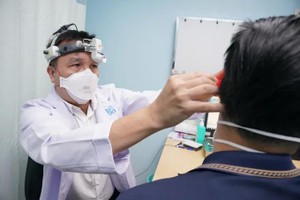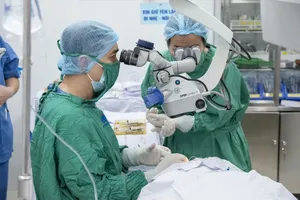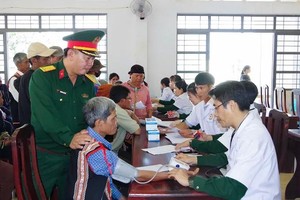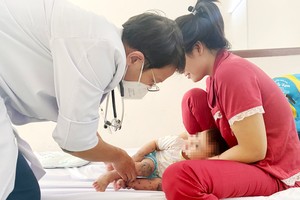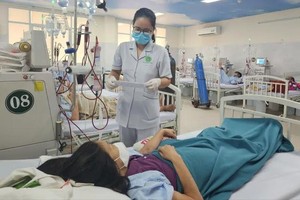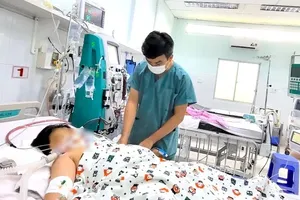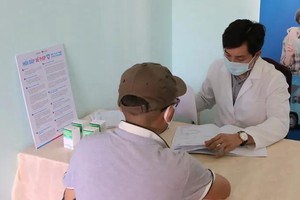In addition, Covid-19 cases are on the rise again due to the emergence of a new strain.

At the Department of Infectious Diseases, Ho Chi Minh City-based Children's Hospital 2, the number of child hospitalization due to dengue fever in the past two weeks has doubled compared to the beginning of May.
Worryingly, many children have been hospitalized with severe dengue, experiencing complications like shock and dangerous bleeding. City Children's Hospital is currently treating numerous children with severe dengue shock, particularly those who are overweight or have pre-existing health conditions.
According to statistics from the Ho Chi Minh City Center for Disease Control, since the beginning of the year, the city has recorded 7,690 dengue fever cases, an increase of 134 percent compared to the same period in 2024 with 3,287 cases. Amongst them, 112 children were in severe condition, accounting for 1.5 percent of the total number of cases.
Dr. Le Hong Nga, Deputy Director of the Ho Chi Minh City Center for Disease Control, emphasized that the peak season for dengue fever typically intensifies from June and lasts until late October. The disease poses a widespread risk, as mosquitoes carrying the virus can breed in any stagnant water, whether in homes or public spaces. Even a single untreated water container left for about a week can become a breeding site, leading to an increase in the likelihood of outbreaks. To minimize this risk, residents must take proactive measures, including regularly cleaning and treating water containers as soon as stagnant water.
Similarly, the number of hand, foot and mouth disease (HFMD) cases in the southern metropolis also tends to increase rapidly. According to the infectious disease surveillance system, from the beginning of 2025 to now, the city has had 6,711 cases of hand and foot lice, an increase of 49 percent compared to the same period in 2024 with 4,510 cases.
The number of inpatients is 967 cases, an increase of 15 percent compared to the same period in 2024 with 842 cases. In particular, the number of hand and foot lice cases fluctuates, with an upward trend from the end of February and a sharp increase in the last weeks of May.
Over the past week, Ho Chi Minh City has reported 916 cases of hand, foot, and mouth disease, marking a 40 percent rise compared to the previous four-week average of 654 cases. In addition, the number of hospitalized patients has increased by 26 percent.
According to Dr. Tran Ngoc Luu from the Department of Infectious Diseases at Children’s Hospital 2, the hand, foot, and mouth disease can occur year-round but typically sees a rise in cases between March and May and again from September to December. Children under the age of five are the most vulnerable, and reinfection remains a risk if they are re-exposed to the source of infection.
Data from the infectious disease surveillance system indicate a noticeable uptick in Covid-19 cases in Ho Chi Minh City since mid-April. The city has averaged 11 new cases per week—an increase from earlier in the year. In the past week alone, 26 cases were reported, a surge of 16 cases compared to the four-week average of 10 cases per week. From January to the present, the city has recorded a total of 79 Covid-19 cases, comprising 43 inpatients and 36 outpatients. Notably, none of these patients have required respiratory support.
In response to the rising case numbers, the Covid-19 research team at the Hospital for Tropical Diseases, in collaboration with the Oxford University Clinical Research Unit (OUCRU), conducted gene sequencing on samples collected since last week. Results revealed that 83 percent of sequenced samples contained the NB.1.8.1 variant. This variant, first identified in early 2025, has since been reported in 22 countries.
To address the situation, the Ho Chi Minh City Department of Health has activated a proactive response plan. This includes ensuring efficient patient admission, emergency care, and treatment, with a focus on early detection of severe cases to minimize fatalities. Healthcare facilities—ranging from preventive institutions to treatment-focused units—have been instructed to remain in a state of readiness to respond swiftly to disease developments.
